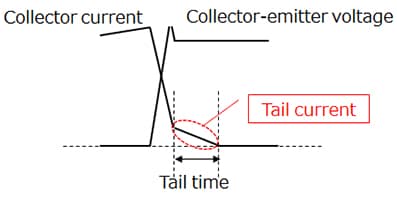- 半導體首頁
-
應用Automotive
Body Electronics
xEV
In-Vehicle Infotainment
Advanced Driver-Assistance Systems (ADAS)
Chassis
IndustrialInfrastructure
BEMS/HEMS
Factory Automation
Commercial Equipment
Consumer/PersonalIoT Equipment
Healthcare
Wearable Device
Mobile
Computer Peripherals
-
產品車用元件
Discrete Semiconductor
Diodes
電晶體
通用邏輯IC
Analog Devices
Digital Devices
Wireless Devices
※
: Products list (parametric search)
功率半導體※
: Products list (parametric search)
隔離器/固態繼電器Photocouplers
Digital Isolators
※
: Products list (parametric search)
MOSFETsIGBTs/IEGTs雙極性電晶體※
: Products list (parametric search)
Diodes※
: Products list (parametric search)
微控制器馬達驅動 ICs智能功率 ICs※
: Products list (parametric search)
電源管理 ICs線性 ICs※
: Products list (parametric search)
通用邏輯 ICs線性影像感測器其他產品其他產品
※
: Products list (parametric search)
-
開發/設計支援
開發 / 設計支援
-
技術知識
- 購買管道
- 型號 & 關鍵字搜尋
- 交叉搜尋
- 參數搜尋
- 線上庫存查詢跟購買
This webpage doesn't work with Internet Explorer. Please use the latest version of Google Chrome, Microsoft Edge, Mozilla Firefox or Safari.
型號需要超過三個文字以上 Search for multiple part numbers fromhere.
The information presented in this cross reference is based on TOSHIBA's selection criteria and should be treated as a suggestion only. Please carefully review the latest versions of all relevant information on the TOSHIBA products, including without limitation data sheets and validate all operating parameters of the TOSHIBA products to ensure that the suggested TOSHIBA products are truly compatible with your design and application.Please note that this cross reference is based on TOSHIBA's estimate of compatibility with other manufacturers' products, based on other manufacturers' published data, at the time the data was collected.TOSHIBA is not responsible for any incorrect or incomplete information. Information is subject to change at any time without notice.
型號需要超過三個文字以上
What is the tail current of an IGBT?

The IGBT is a type of power transistor that operates in bipolar mode because of the P layer formed on the drain side of a MOSFET. The IGBT uses a phenomenon called conductivity modulation that exhibits a reduction in the resistivity of the high-resistance N- drift region at turn-on when holes are injected from this P region.
On-state voltage can be reduced because of conductivity modulation, but the IGBT needs to remove minority carriers from the N- drift region when it turns off.
When the IGBT begins to turn off, minority carriers are swept out to external circuitry. When the collector-emitter voltage (VCE) of the IGBT has risen to a certain level (i.e., after the depletion region has expanded), minority carriers contribute to internal recombination current. This current is called tail current. Because tail current is the collector current with a high VCE voltage being applied, it is one of the significant contributors to switching loss.
To reduce tail current and thereby switching loss, IGBTs are principally designed so as to reduce 1) the lifetime of minority carriers and 2) the amount of holes injected from the collector. However, both these techniques cause a rise in on-state voltage. Therefore, IGBTs are designed with optimum trade-offs among these characteristics according to their intended applications.

